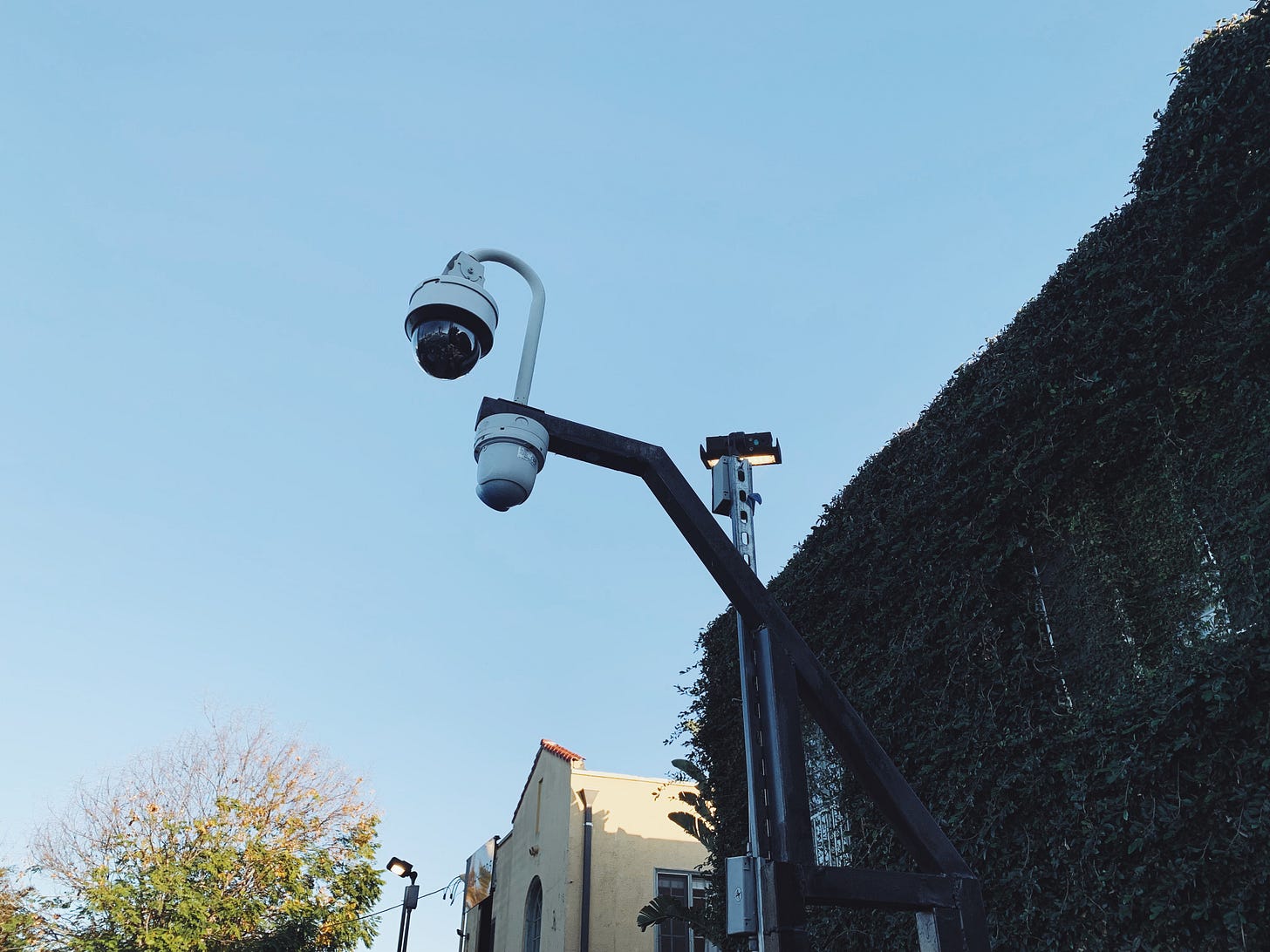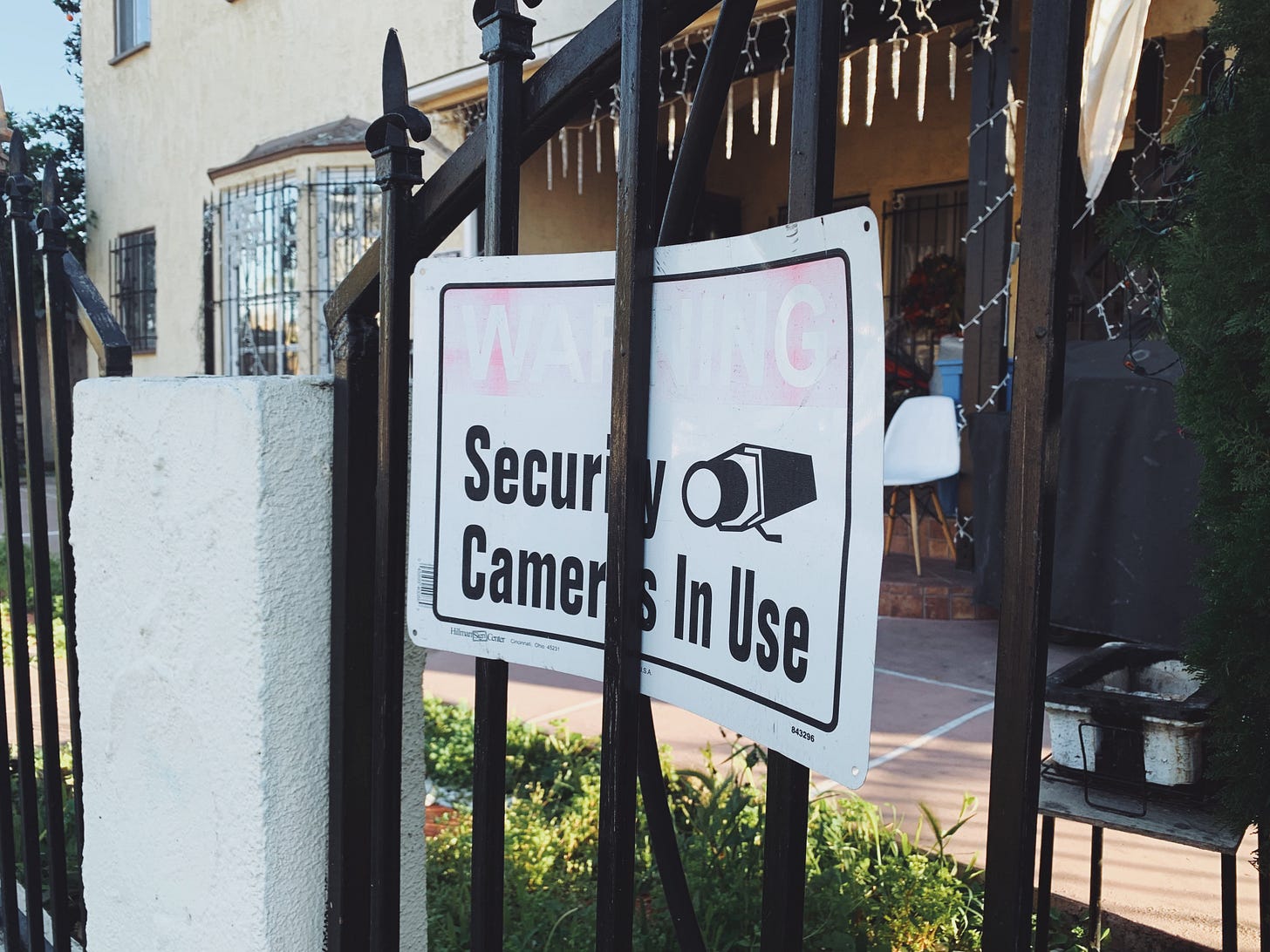A few weeks ago, I shared a reading recommendation by Mike Davis that helped me, once upon a time, as I was beginning to learn how to read cities. I specifically recommended the version of Davis’ essay that begins with the sentence “The city bristles with malice,” because it is a sentence that, for years, has continued to ring in my head as I walk the streets of my neighborhood.
As a writer and a writing teacher, I am often interested in breaking sentences, even simple ones, down into their component parts so that I can understand them more fully. When I read “The city bristles with malice” these days, the first thing I note to myself is the way that “the city” is positioned as the grammatical subject. In this sentence, “the city” (by which Davis means Los Angeles) is doing an action. It is bristling.
When you think of “the city,” who and what do you think of? The downtown LA skyline? The beach at sunset? A bird’s eye view shot of the Hollywood Hills at dusk just as all the city lights begin to glitter?
When I hear Davis’ sentence, a series of images flood my mind. I see sidewalks lined with big boulders or large, immovable planters. I see chain link fencing, signs banning any number of activities (skateboarding, roller blading, loitering, street vending, sleeping). I see spiky cactuses planted in what used to be a flat dirt parkway. I see razor wire atop walls and buildings, security signs and surveillance cameras. All of these objects are what urban planners and others call “hostile architecture,” and they are meant to do exactly what they look like they are meant to do: exclude anything “unwanted” from a public space.
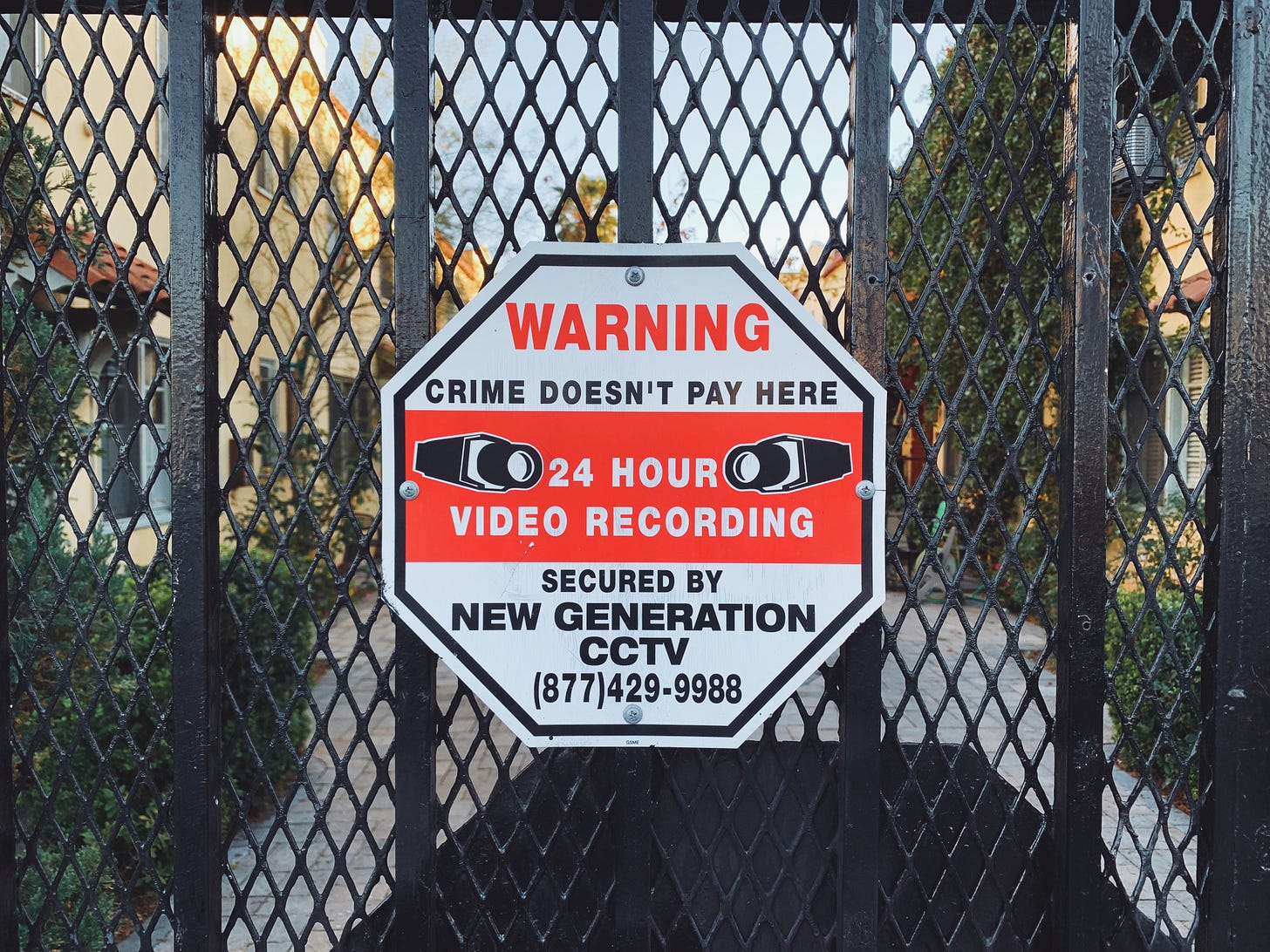
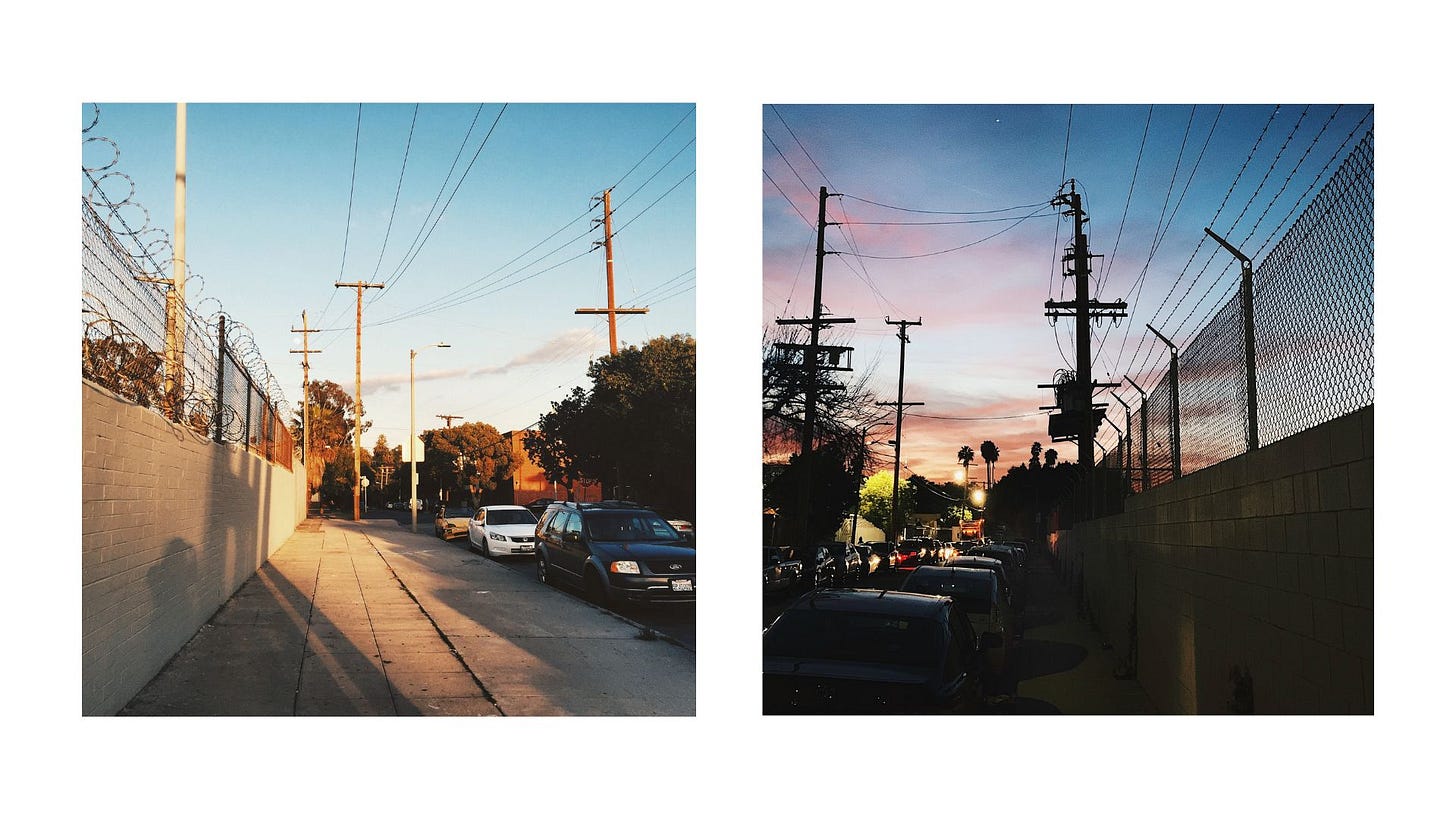
Sometimes hostile architecture is the work of vigilantes, people who want to control an environment even when the law is not on their side. We saw this kind of hostile architecture at play in our neighborhood last year when people affiliated with the LACC swap meet installed fences with fake signs claiming vending was illegal in that area (it is not). Those same people later illegally installed large boulders on the parkways where vendors make a living on weekends.
Other hostile architecture is the work of the city, which bans certain behaviors in certain places and threatens fines, arrest, or other potentially violent interaction with the state if those laws are to be broken. Signs that tell people not to skateboard, loiter, or sleep in certain areas. Sometimes city policy isn’t even about explicitly banning particular activities in public spaces, but is about stripping public spaces of amenities. A dense city grid without green space is hostile. A neighborhood that is chopped into pieces to make room for a highway is hostile. During the early days of COVID, I would walk for miles at dusk exploring streets I didn’t know, and one of the most frustrating aspects of those walks was when I would turn south down some road, only to have it dead end at the 101. So I would walk to the next road and encounter the same thing. Again and again, a whole, once cohesive neighborhood now filled with dead ends, making it harder to get from one place to another.

Sometimes hostile architecture is so normalized, we might not even register it as such. Ring cameras and those little door stickers that alert passersby to security systems are just some of the ways in which private citizens themselves signal a sense of distrust and hostility to those around them.
Public space in Los Angeles has been so controlled and policed for so long, it might be hard to imagine a different way for us to experience or navigate our own cities. My colleague Samanta shared a photo essay recently that highlighted many of the gorgeous, sometimes overgrown or less-than-perfect plants in our neighborhood. Viewing those photos feels like a balm for the malice I feel from this city when I see its hostile architecture bristling, in action, in an attempt to tell other humans where and how they can and can’t be.

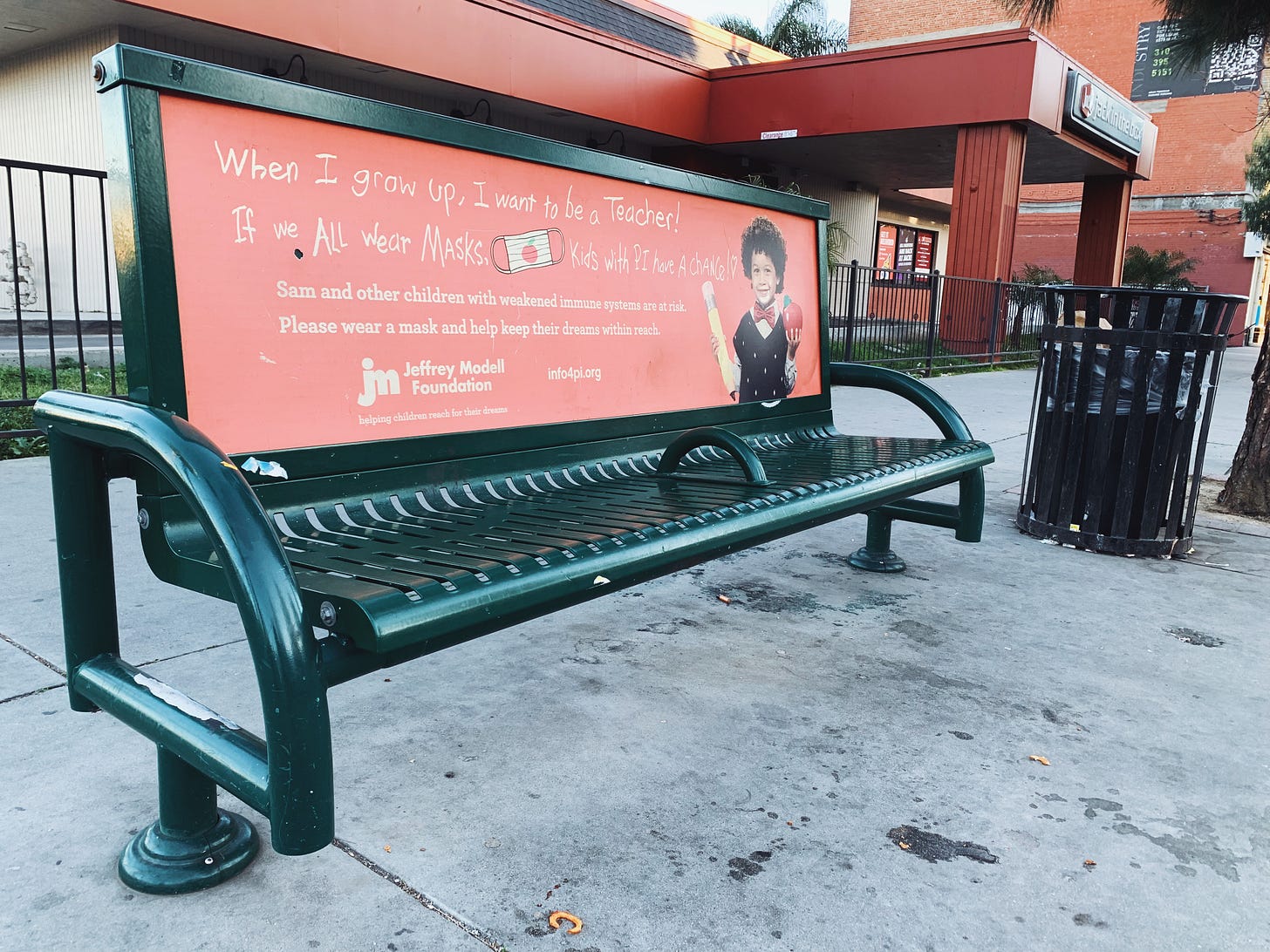
When I walk through the neighborhood these days, I try to make mental notes for myself about what feels good as I navigate that public space: wide sidewalks that give me a chance to chat with neighbors and shop owners without congesting the walkway for others, greenspace filled with kids chasing each other, plants that have overtaken old fences so that the fences become architecture for nature to flourish rather than symbols of exclusion and control. What could this city do if it weren’t bristling with malice? Who could we be as a city if we loosened our grip on public space and instead imagined and then built a Los Angeles where play, connection, and care were encouraged by our landscapes and policies?
P.S. Please see the poll below and submit your response when time permits!


